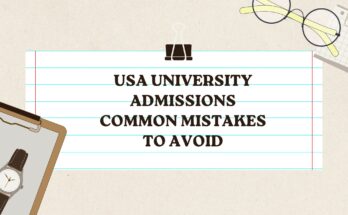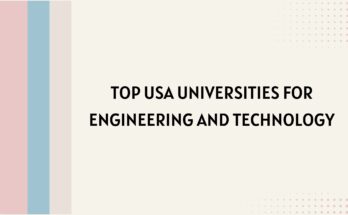When thinking about university life in the United States, one of the defining features that often comes to mind is the vibrant and competitive world of university sports programs. These programs are not only a significant part of campus culture but also a pathway to professional athletics for many students. Whether you’re a prospective student-athlete, a parent, or simply an enthusiast of college sports, understanding the landscape of university sports in the USA is essential. Here’s an in-depth look at what you need to know.:
USA University Sports Programs: What You Need to Know
The Structure of University Sports in the USA
University sports in the United States are typically organized under several governing bodies, each overseeing different levels of competition and types of institutions.
- NCAA (National Collegiate Athletic Association):
- Divisions: The NCAA is divided into three main divisions (I, II, and III). Division I schools are typically larger institutions with more athletic scholarships available and more extensive athletic facilities. Division II schools also offer scholarships but to a lesser extent, while Division III schools do not offer athletic scholarships but emphasize a balance between athletics, academics, and extracurricular activities.
- Sports Offered: The NCAA sponsors championships in various sports, including football, basketball, baseball, track and field, and many others.
- NAIA (National Association of Intercollegiate Athletics):
- The NAIA is a smaller association compared to the NCAA but still offers competitive athletic programs and scholarships. It is known for fostering a community environment and providing student-athletes with opportunities to compete while receiving a quality education.
- NJCAA (National Junior College Athletic Association):
- The NJCAA governs sports at the junior college level, providing a platform for athletes to develop their skills and potentially transfer to four-year institutions.
Recruitment Process and Scholarships
One of the most critical aspects of university sports is the recruitment process. For many student-athletes, earning a spot on a college team can also mean securing financial assistance through athletic scholarships.
- Recruitment Timeline: Recruitment can begin as early as freshman or sophomore year of high school, especially for top-tier athletes. Coaches often start scouting talent through various channels, including high school competitions, club sports, and showcases.
- Scholarship Opportunities: Athletic scholarships vary widely in amount and are more prevalent in NCAA Division I and II schools. Division III schools and some NAIA schools might offer merit-based or need-based financial aid instead.
- Eligibility: To be eligible for recruitment, students must meet specific academic and athletic criteria set by the governing bodies (e.g., NCAA Eligibility Center requirements).
Balancing Academics and Athletics
Being a student-athlete in the USA requires a careful balance between academics and athletics. Universities provide various resources to help athletes succeed both on and off the field.
- Academic Support: Many universities offer tutoring, academic advising, and study halls specifically for athletes. These resources are designed to help student-athletes manage their time effectively and maintain good academic standing.
- Time Management: Balancing the rigorous demands of training, travel, and competition with academic responsibilities is challenging. Successful student-athletes often excel in time management and prioritize their responsibilities effectively.
The Role of Coaches and Athletic Staff
Coaches and athletic staff play a crucial role in the development of student-athletes. They are not only responsible for training and competition but also for mentoring athletes and supporting their overall well-being.
- Coaching Philosophy: Coaches’ approaches can vary widely, from highly competitive and performance-driven to more developmental and educational. Understanding a coach’s philosophy can be crucial for athletes when choosing a program.
- Support Staff: Athletic programs also include various support staff such as athletic trainers, sports psychologists, and nutritionists who contribute to the holistic development of athletes.
The Impact of University Sports on Campus Life
University sports significantly influence campus culture and student life. Sporting events can be major social events, fostering school spirit and unity.
- Game Day Atmosphere: Game days, especially for sports like football and basketball, can transform a campus. Tailgating, pep rallies, and packed stadiums create an electric atmosphere that’s a hallmark of American college life.
- School Spirit: Participation in and support for university sports teams often fosters a strong sense of community and school pride among students, alumni, and fans.
Career Opportunities and Life After College Sports
For many student-athletes, university sports are a stepping stone to professional careers. However, the skills and experiences gained through collegiate athletics also prepare students for various career paths beyond sports.
- Professional Sports: A significant number of professional athletes, particularly in sports like basketball and football, come through the NCAA system. University sports programs provide a high level of competition and exposure to scouts and professional teams.
- Other Careers: The discipline, teamwork, and leadership skills developed through sports are highly valued in many professions. Many former student-athletes find success in fields such as business, education, and public service.
- Alumni Networks: Being part of a university sports team often connects athletes to a strong alumni network, providing valuable career connections and support after graduation.
Challenges and Considerations
While university sports offer many benefits, there are also challenges and considerations for student-athletes.
- Injuries: The risk of injury is inherent in athletics, and it’s essential for student-athletes to have access to proper medical care and rehabilitation services.
- Academic Pressure: Balancing academics with the demands of sports can be stressful. Ensuring that athletes receive adequate academic support is crucial.
- Transition Out of Sports: For many student-athletes, the transition from competitive sports to regular life after college can be challenging. Universities often provide resources to help athletes navigate this transition.
Conclusion
University sports programs in the USA are a unique and integral part of higher education, offering opportunities for athletic excellence, academic achievement, and personal growth. Whether you’re aspiring to be a student-athlete or just a passionate supporter of college sports, understanding the landscape, from the recruitment process to life after sports, is essential. These programs not only shape the lives of those who participate but also contribute significantly to the vibrant culture and community of American universities.



